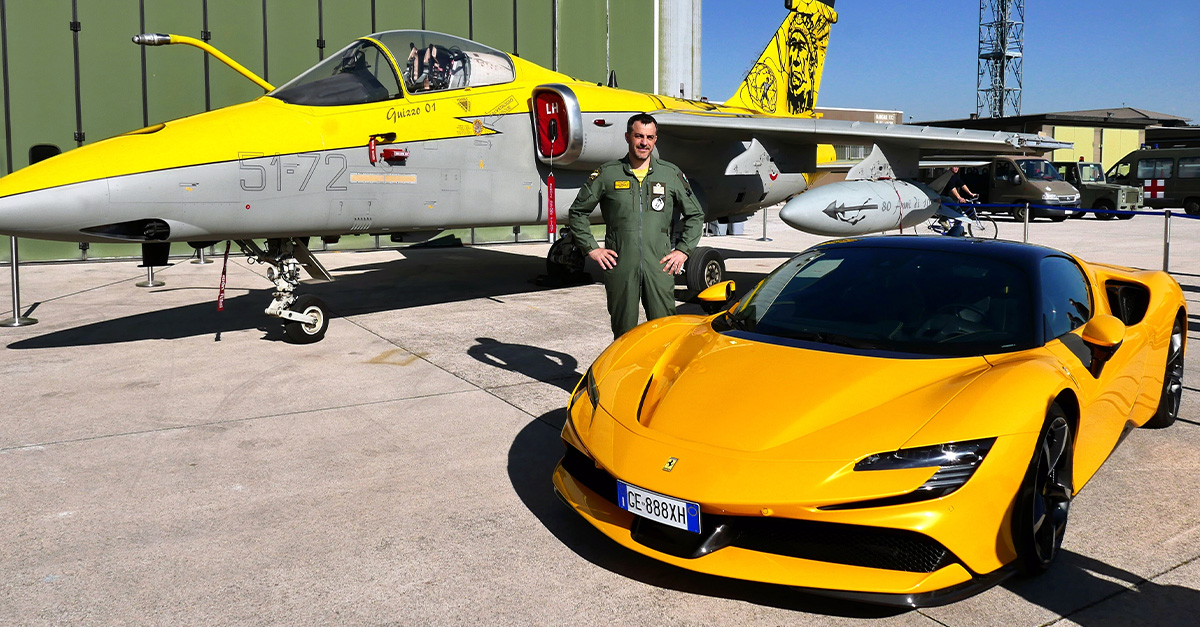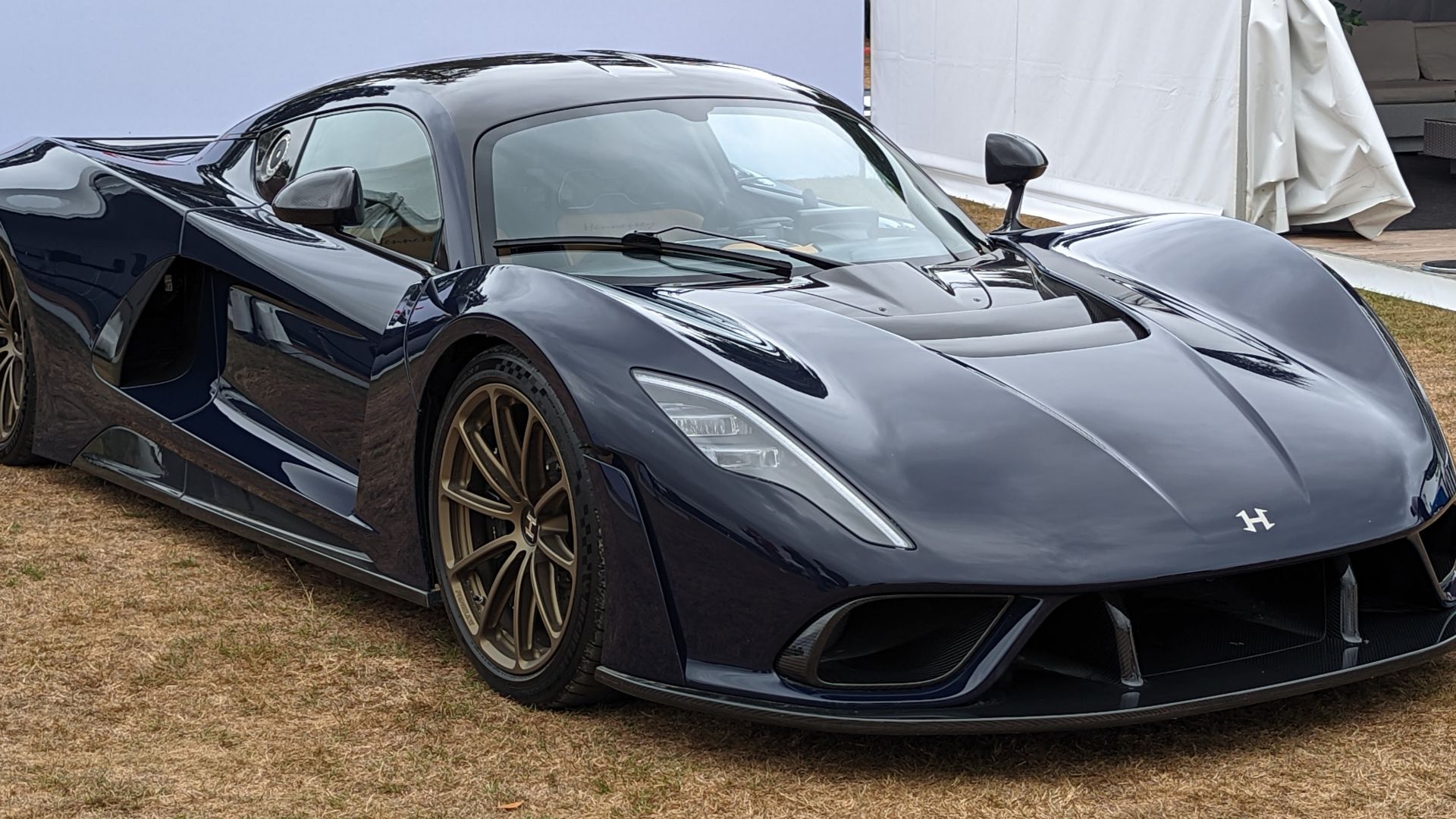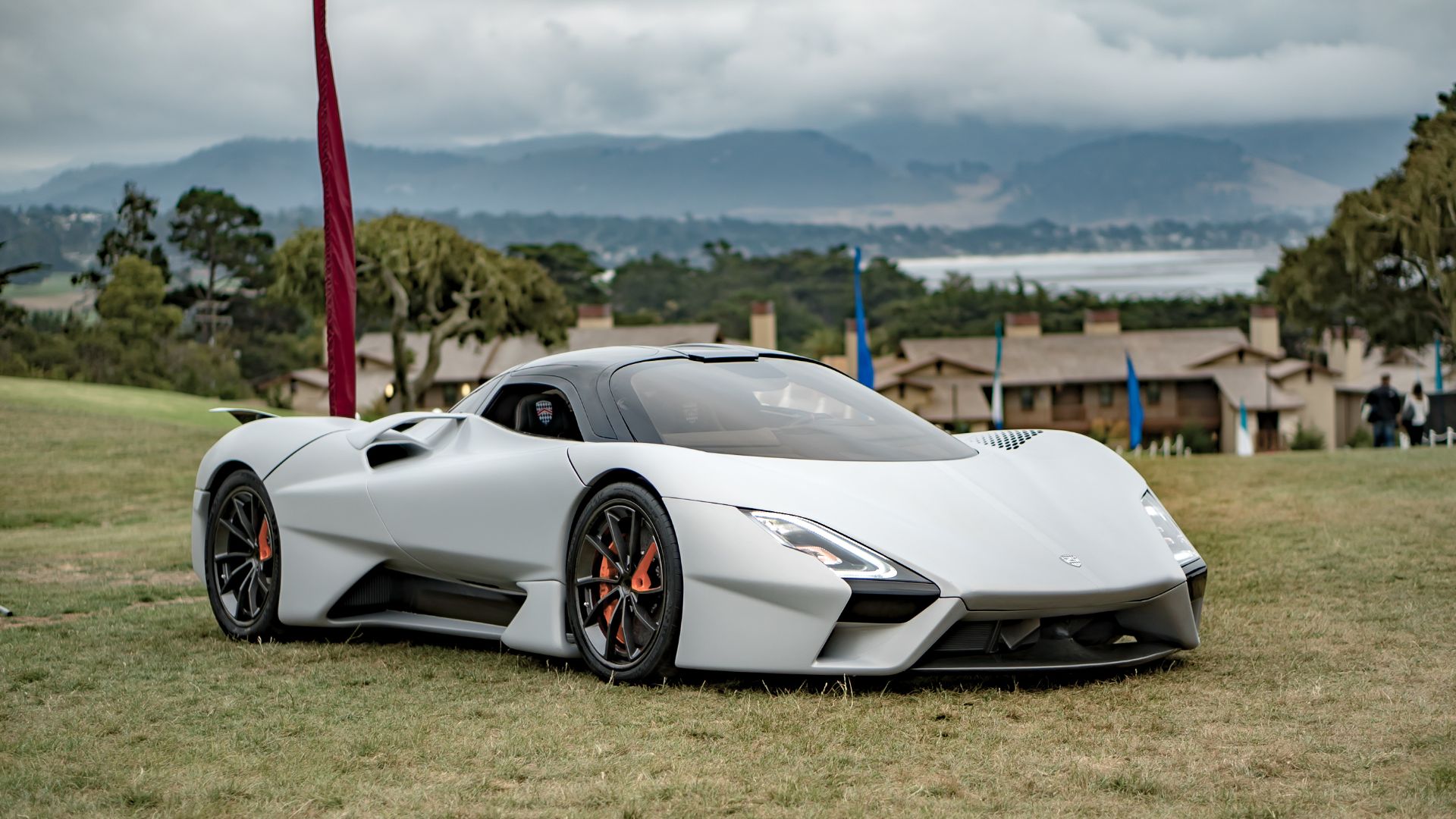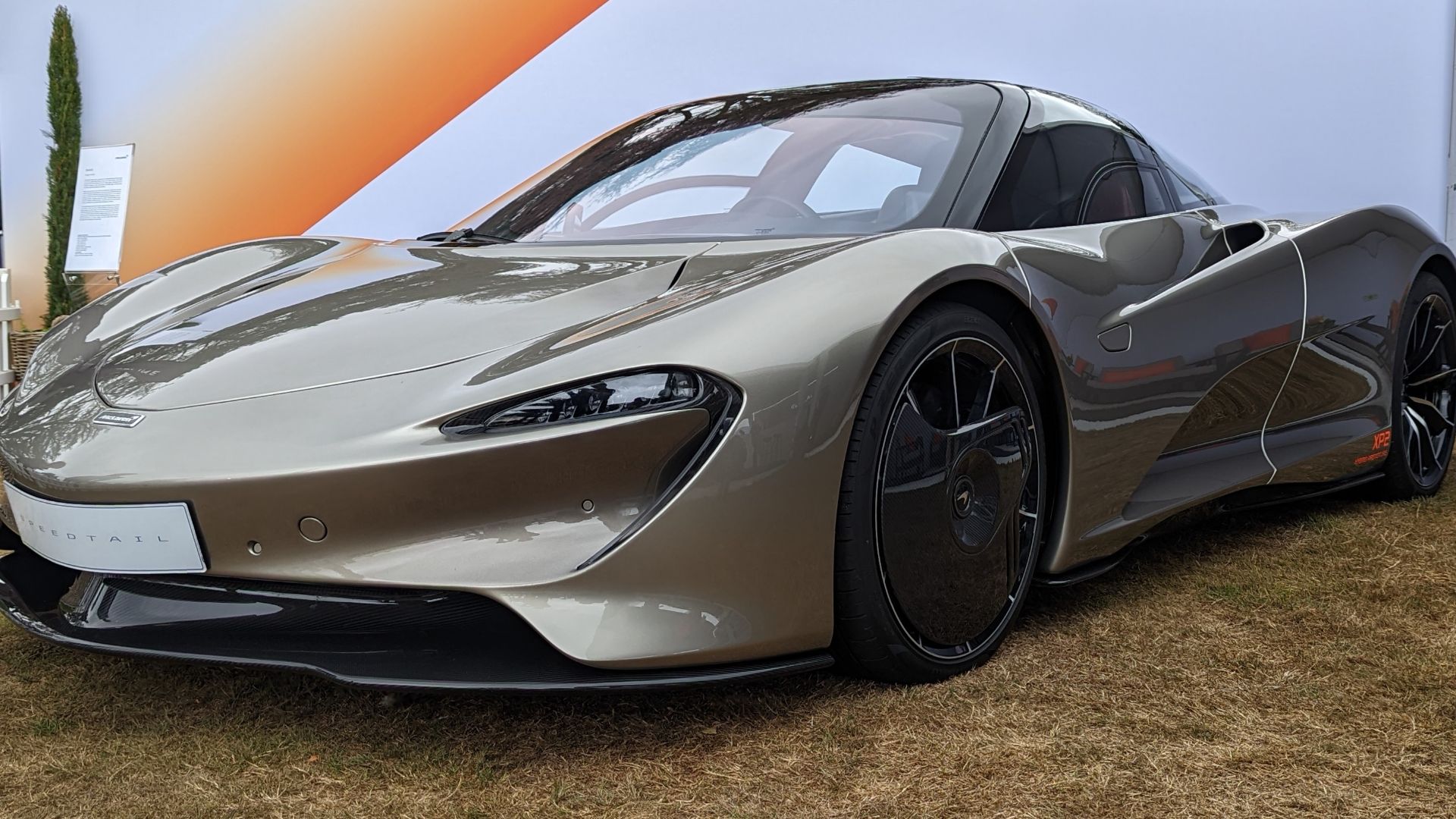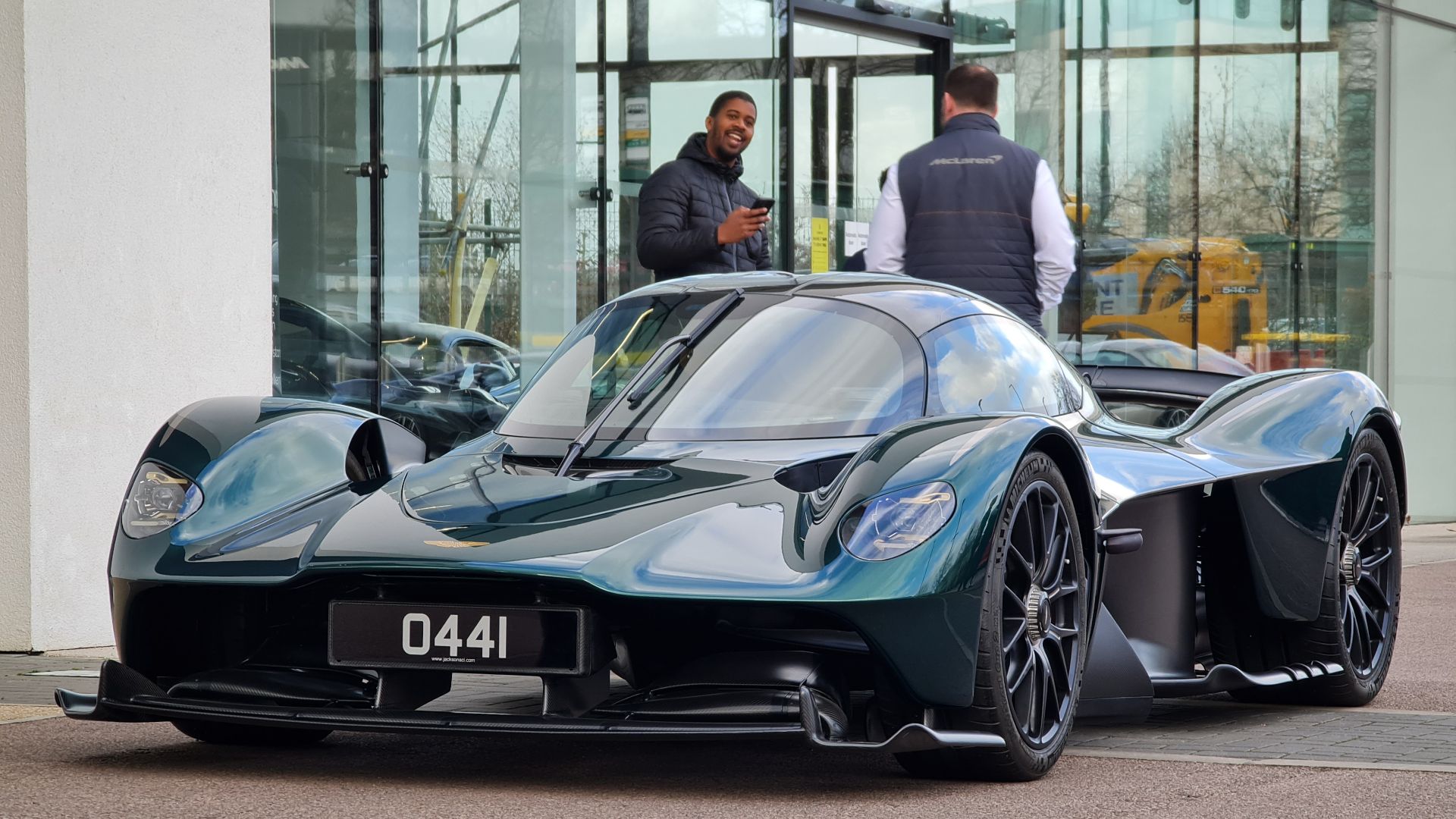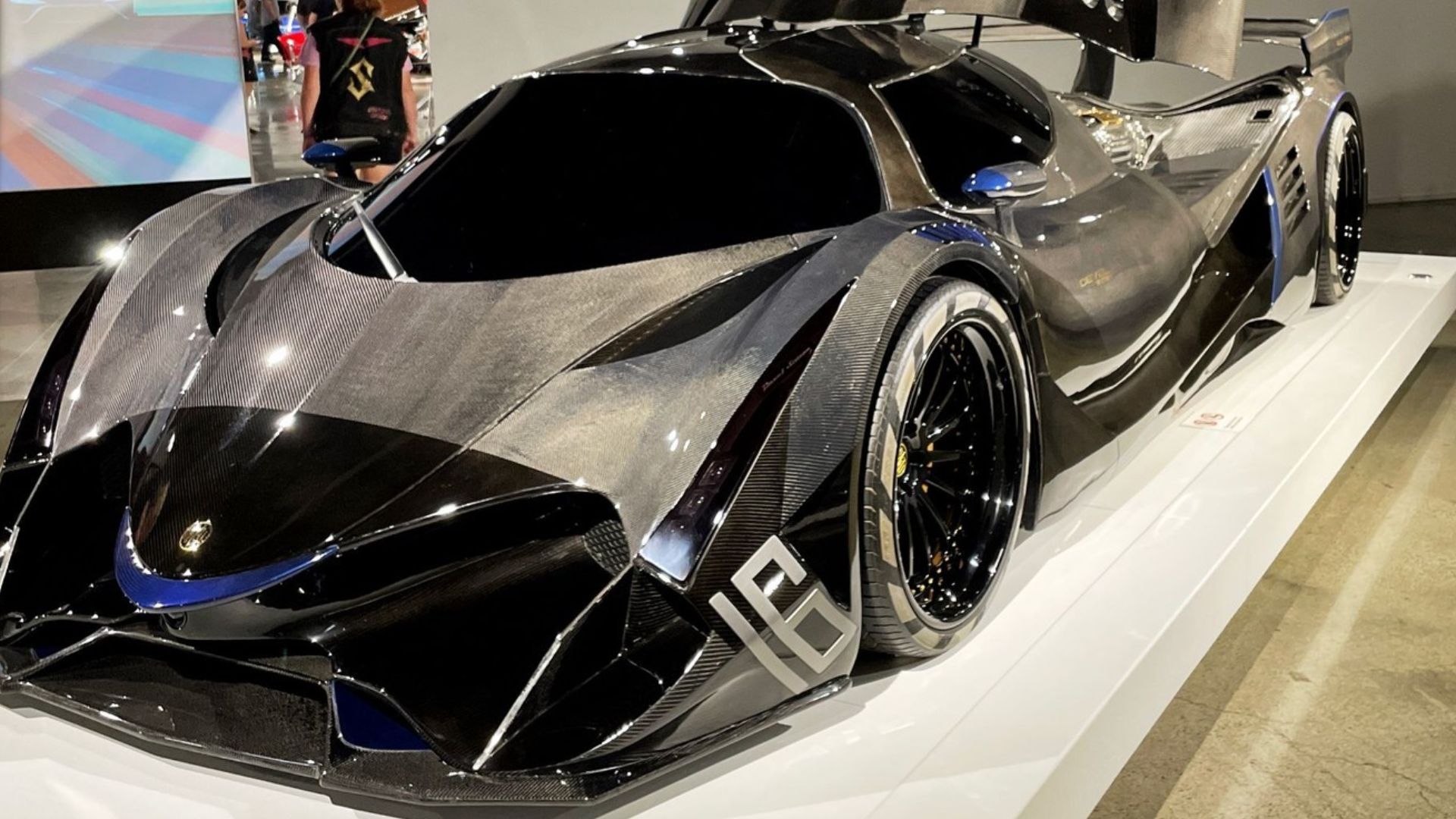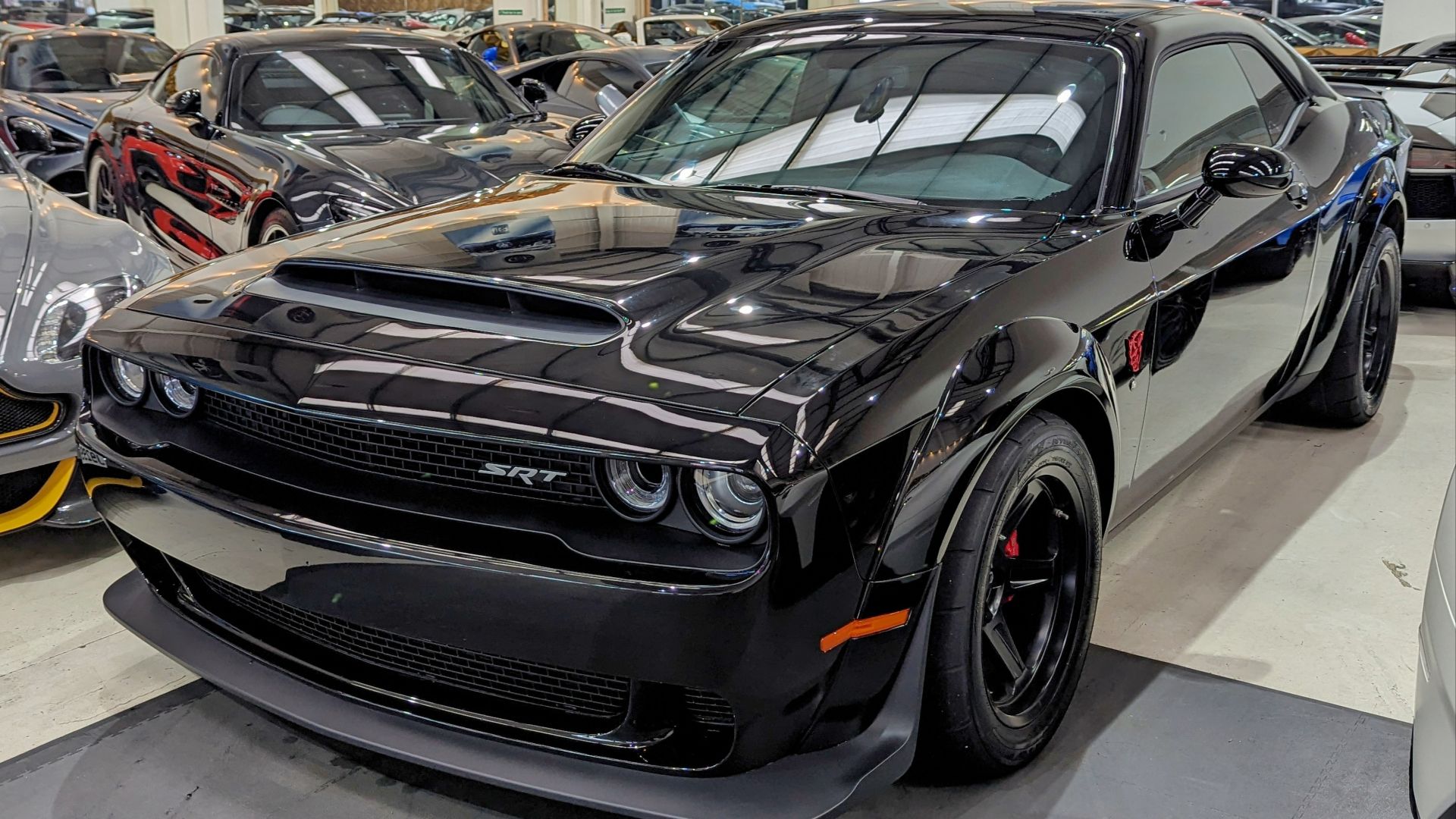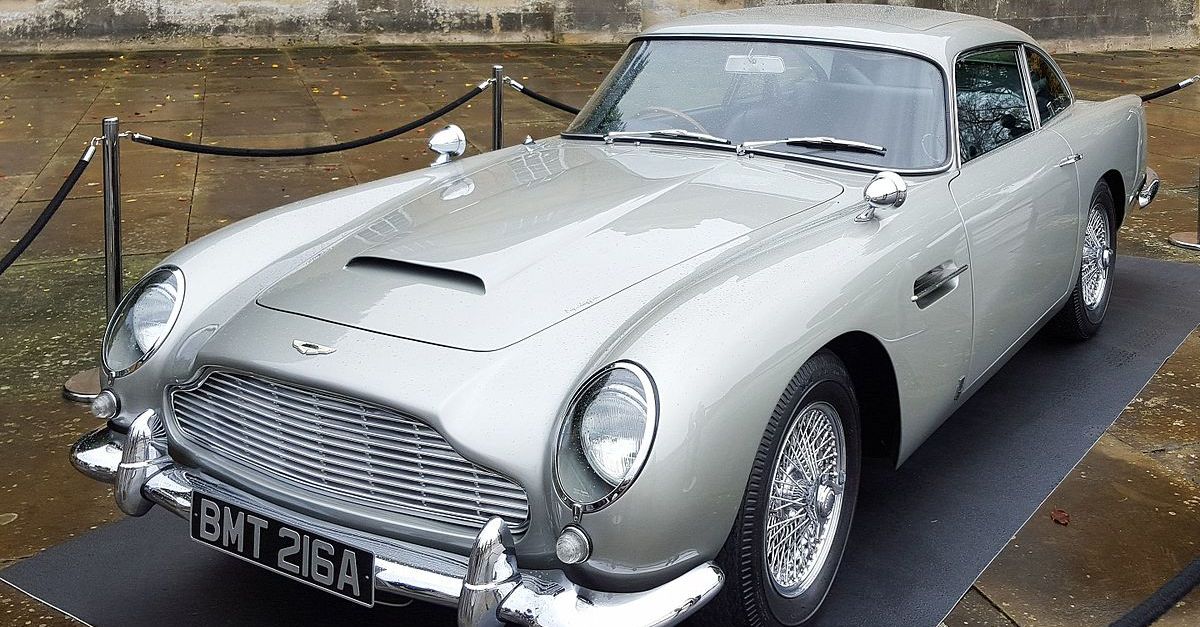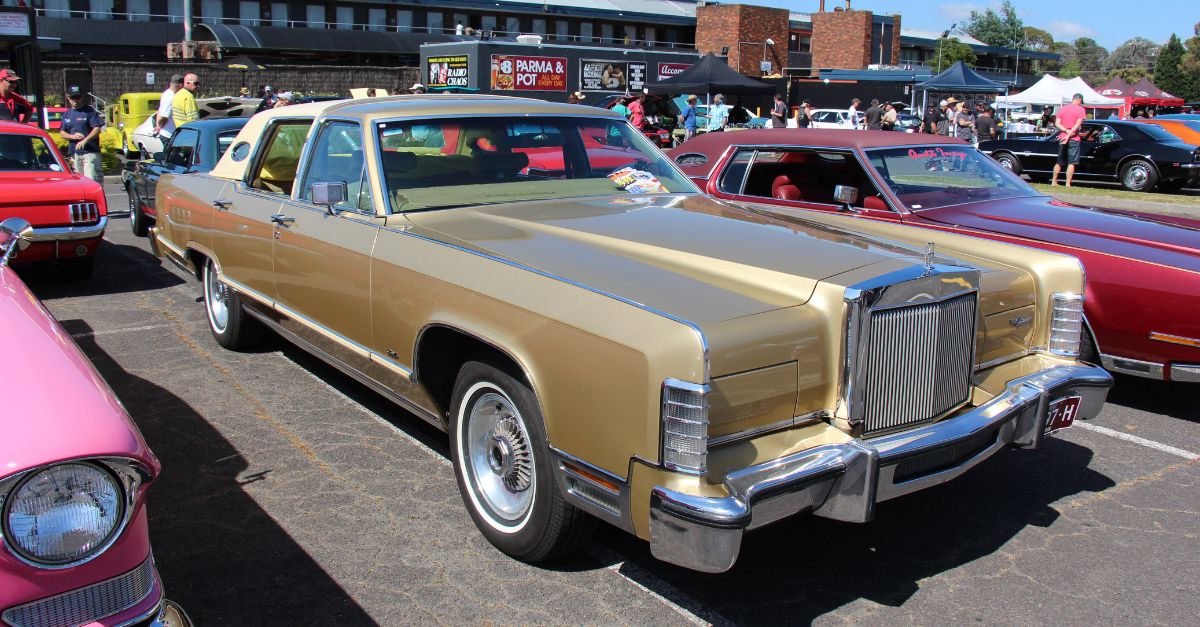These Supercars Give Fighter Jets A Run For Their Money
Speed has always defined the pinnacle of automotive engineering. As technology evolves, today’s hypercars and supercars are breaching limits once reserved for jets. While few can match a fighter aircraft after takeoff, many can off the line—and some have even raced them. These cars are feats of engineering, with top speeds, 0–60 times, and aerodynamic profiles built for one purpose: to go faster than reason allows.

Bugatti Chiron Super Sport 300+
The Bugatti Chiron Super Sport 300+ shattered records when it broke the 300 MPH barrier in 2019, reaching a top speed of 304.77 MPH. It accelerates from 0 to 60 MPH in just 2.3 seconds thanks to its quad-turbocharged 8.0-liter W16 engine producing 1,577HP. While it hasn’t officially raced a jet, its unmatched straight-line speed makes it a theoretical contender.
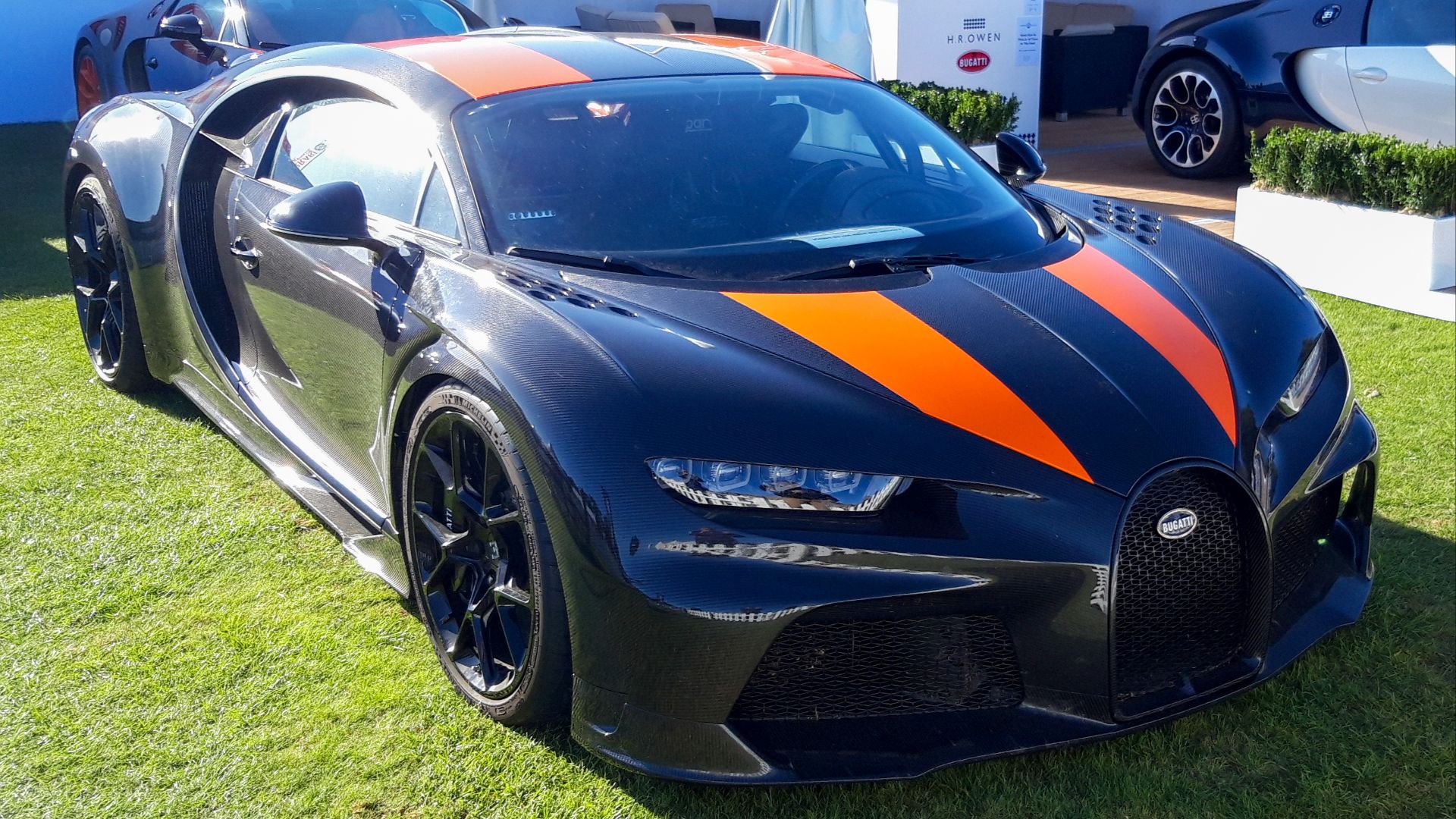 Liam Walker, Wikimedia Commons
Liam Walker, Wikimedia Commons
Hennessey Venom F5
The Hennessey Venom F5 is designed to exceed 311 MPH, though its official top speed is still pending verification. Powered by a 6.6-liter twin-turbo V8 generating 1,817HP, the F5 rockets from 0 to 60 MPH in under 2.6 seconds. Its name references tornado strength, and it was built from the ground up to dethrone jet-like rivals.
Koenigsegg Jesko Absolut
Sweden’s Koenigsegg Jesko Absolut is engineered for maximum velocity, with projections suggesting it could exceed 310MPH, but this hasn't been officially tested. It features a twin-turbo V8 with up to 1,600HP on E85 fuel and achieves 0–60 in about 2.5 seconds. The Koenigsegg's Swedish engineering has yet to race a jet, but the Swedes are pretty confident it would give it a run for it's money.
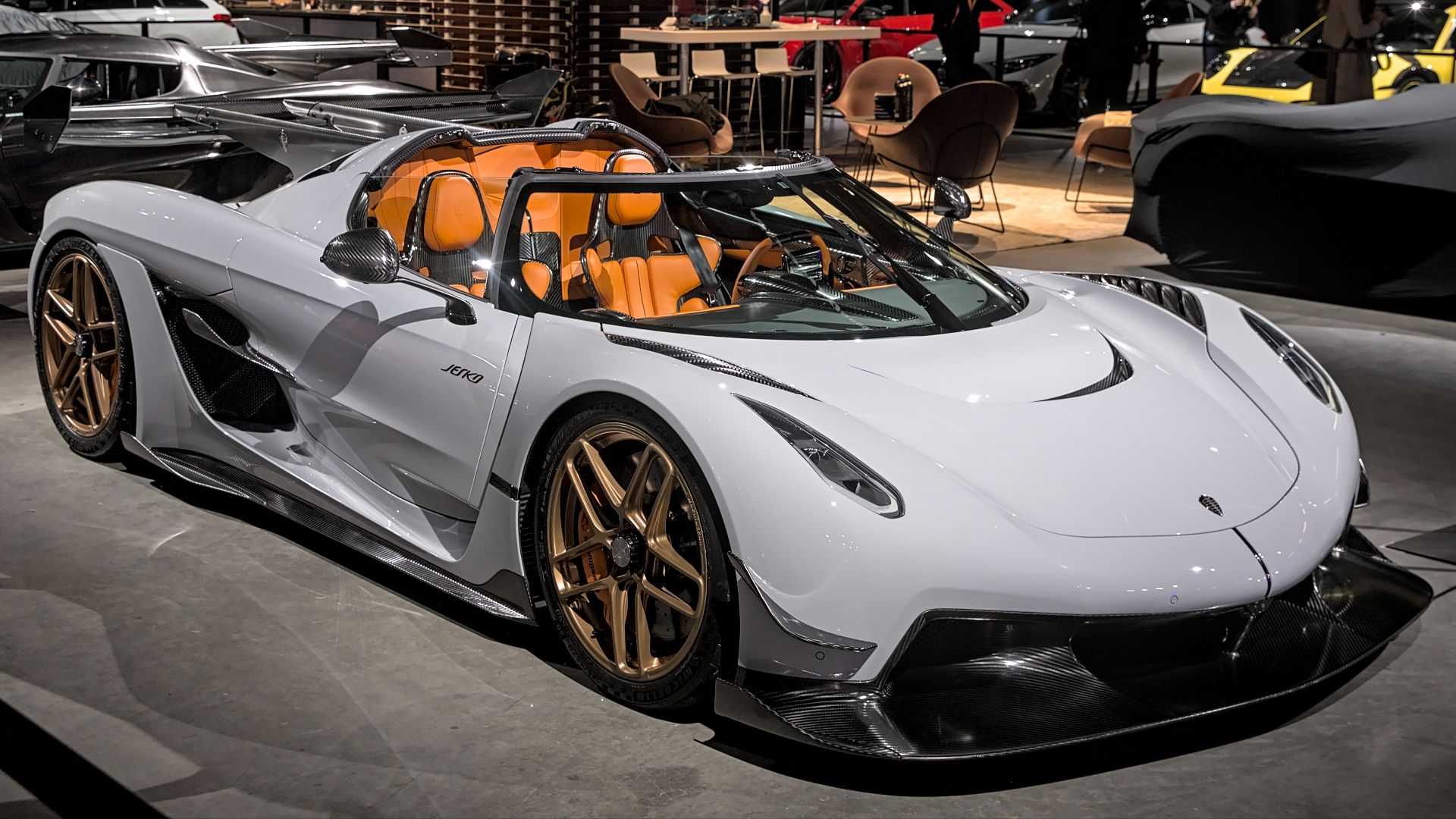 Alexander-93, Wikimedia Commons
Alexander-93, Wikimedia Commons
SSC Tuatara
SSC North America stunned the car world with the Tuatara, which claimed to hit a disputed 331 mph. Even under verified conditions, it reached 282.9 MPH. Its 5.9-liter twin-turbo V8 produces 1,750HP, and it can go from 0 to 60 mph in just 2.5 seconds. SSC remains laser-focused on building the world’s fastest road-legal car.
Rimac Nevera
The Rimac Nevera is a Croatian all-electric hypercar that has been clocked at 258 MPH, making it the fastest EV on record. With four electric motors generating 1,914HP and a 0–60 time of 1.85 seconds, it has beaten fighter jets in off-the-line races, including a Croatian Air Force MiG-21 in a demonstration drag event.
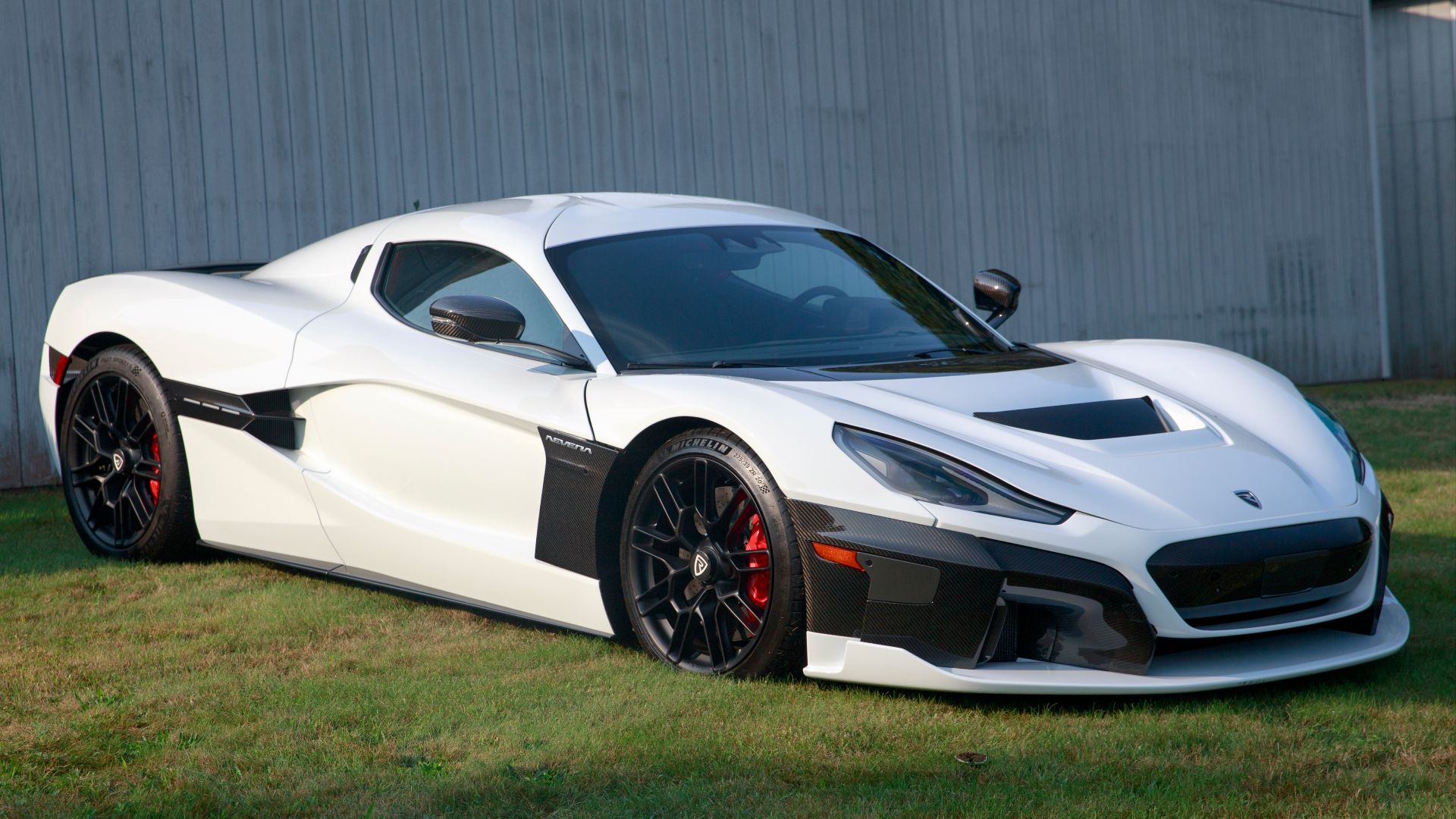 Mr.choppers, Wikimedia Commons
Mr.choppers, Wikimedia Commons
Lamborghini Aventador SVJ
While not the fastest in a straight line, the Lamborghini Aventador SVJ reaches a top speed of 217 MPH and rockets from 0 to 60 in 2.8 seconds. With its 6.5-liter naturally aspirated V12 and aggressive aerodynamics, it once famously raced a Eurofighter Typhoon on a runway in Italy—and briefly kept up during takeoff.
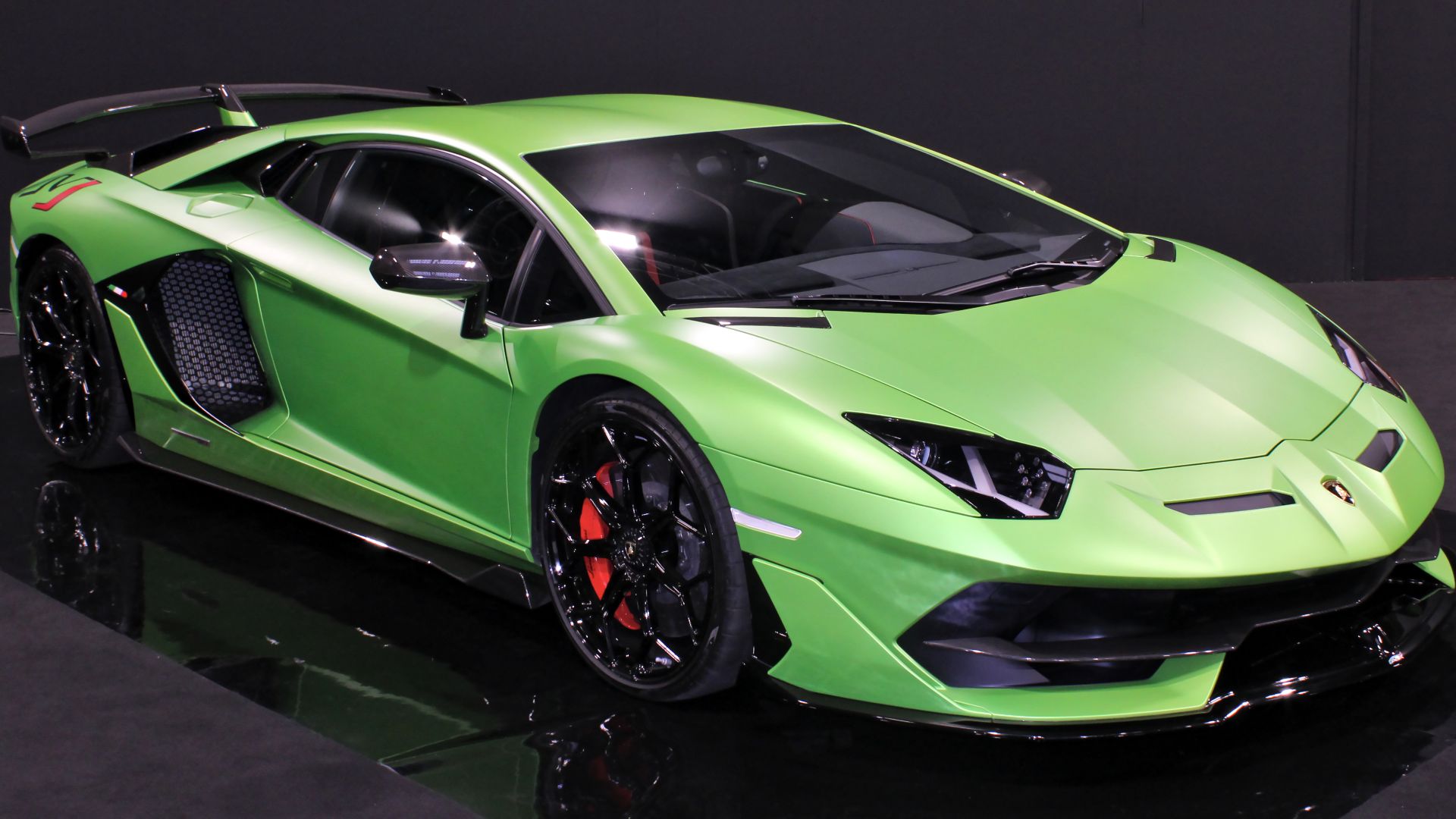 Alexander Migl, Wikimedia Commons
Alexander Migl, Wikimedia Commons
Ferrari SF90 Stradale
Ferrari’s hybrid supercar, the SF90 Stradale, combines a twin-turbo V8 with three electric motors for a combined output of 986HP. It hits 211 MPH and reaches 60 mph in just 2.0 seconds. Although it hasn’t officially gone head-to-head with a jet, its electric boost provides instant torque rivaling jet turbine responsiveness.
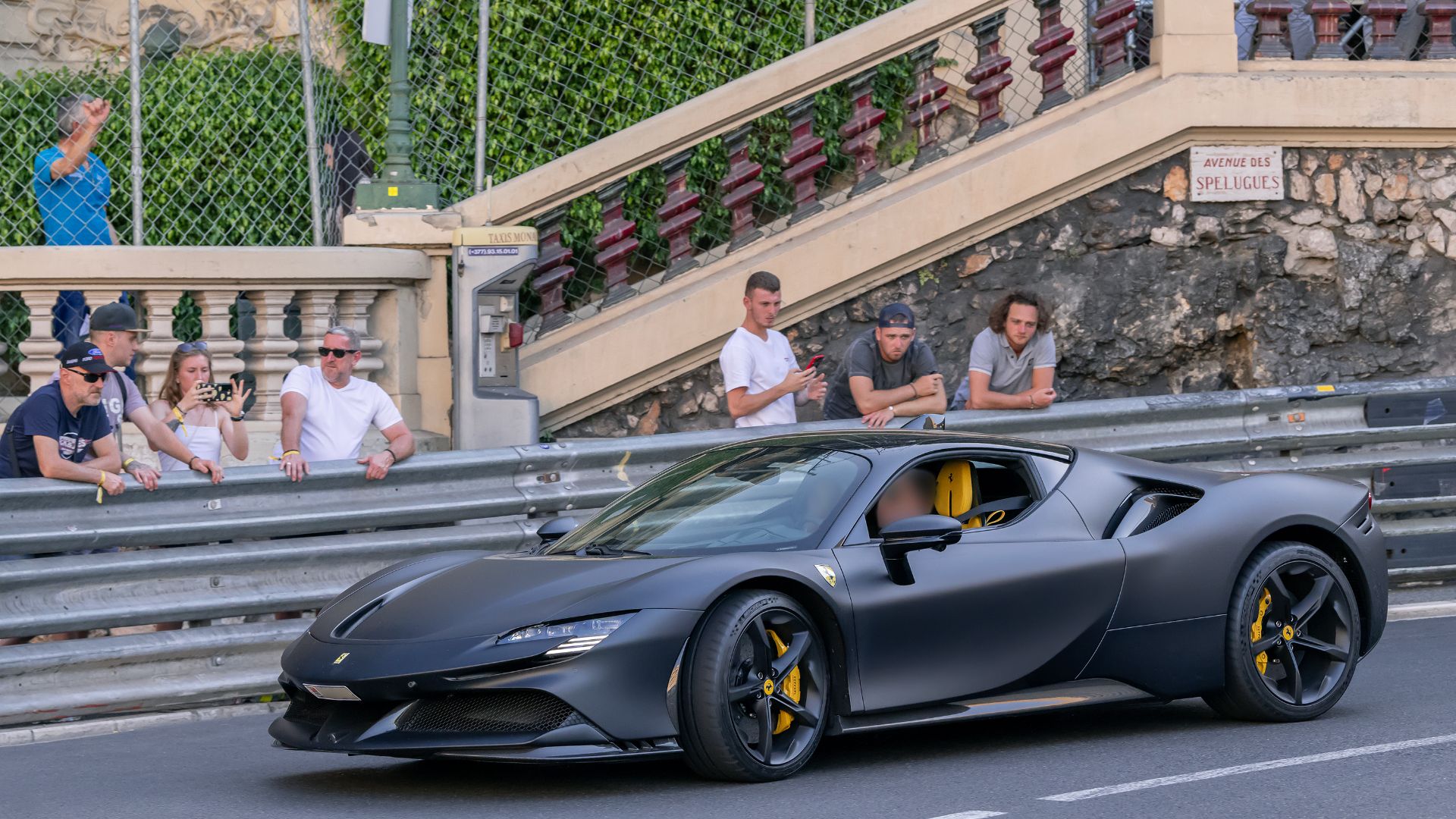 Alexandre Prevot from Nancy, France, Wikimedia Commons
Alexandre Prevot from Nancy, France, Wikimedia Commons
McLaren Speedtail
Inspired by the Concorde, the McLaren Speedtail reaches 250 MPH and achieves 0–60 in 2.9 seconds. Its hybrid powertrain includes a twin-turbo V8 and electric motor producing a combined 1,035HP. In promotional runs, it was timed against an F-35 Lightning II on a runway—with visuals evoking a futuristic battle of speed.
Porsche 918 Spyder
Porsche’s 918 Spyder is a hybrid marvel capable of 211 MPH and a 0–60 sprint in 2.2 seconds. Its 4.6-liter V8 and dual electric motors combine for 887HP. Though not aimed at top-speed records, it’s famous for quick launches—essential in any showdown against fast-flying aircraft.
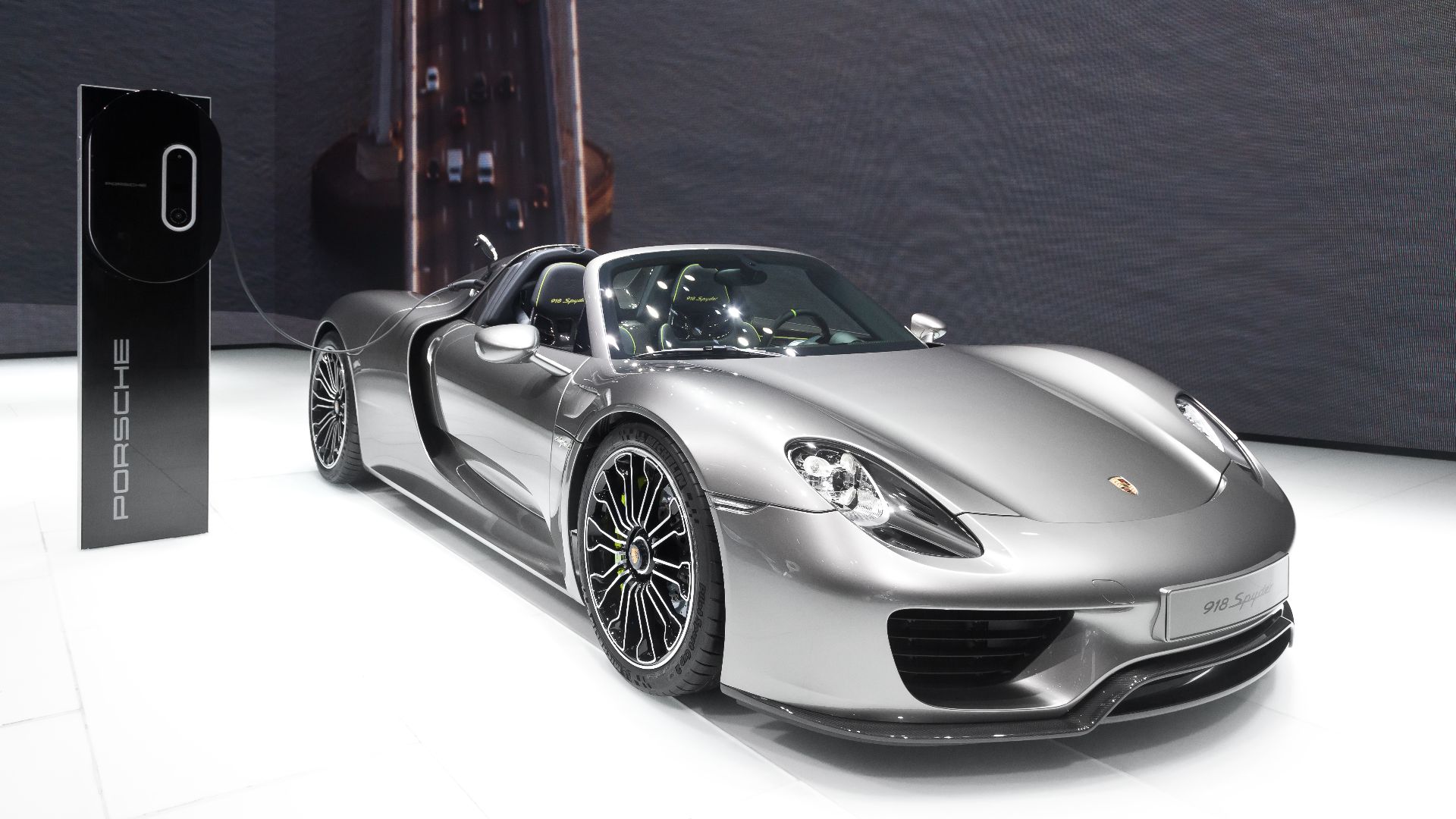 Thomas Wolf, www.foto-tw.de, Wikimedia Commons
Thomas Wolf, www.foto-tw.de, Wikimedia Commons
Aston Martin Valkyrie
The Aston Martin Valkyrie’s F1-inspired design yields 1,160HP from a naturally aspirated V12 hybrid system. Top speed is around 220 MPH, and 0–60 comes in under 2.5 seconds. Its jet-like carbon fiber body and intense downforce make it more spaceship than sports car, though it’s road legal.
Lotus Evija
The all-electric Lotus Evija produces nearly 2,000HP through four independent motors. It reaches 200 MPH and does 0 to 60 in under 3 seconds. While its top speed isn’t record-breaking, the instant acceleration and exotic aerodynamics give it jet-like composure during intense launches and cornering.
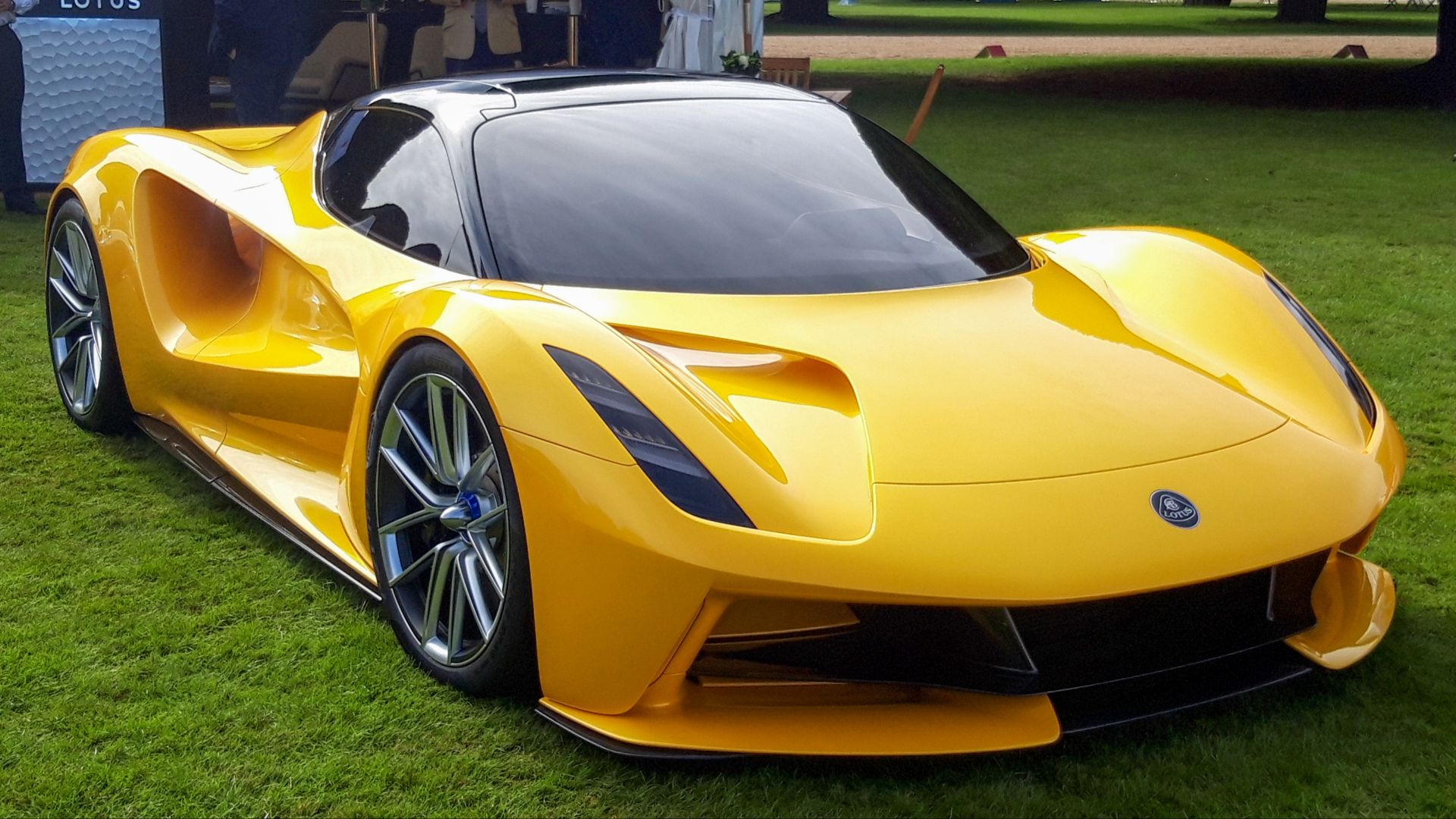 Liam Walker, Wikimedia Commons
Liam Walker, Wikimedia Commons
Tesla Roadster (Next Gen)
Tesla’s upcoming Roadster promises 0 to 60 MPH in 1.9 seconds and a top speed over 250 MPH. Elon Musk has even suggested a “SpaceX package” with cold gas thrusters, hinting at propulsion technology inspired by aerospace. If released as planned, it could redefine electric performance and acceleration.
 Steve Jurvetson from Menlo Park, USA, Wikimedia Commons
Steve Jurvetson from Menlo Park, USA, Wikimedia Commons
Devel Sixteen
Claiming a surreal top speed of over 347 MPH and 5,000HP from a 12.3-liter quad-turbo V16, the Devel Sixteen remains more legend than verified reality. Though untested at full speed, it’s been touted as a car designed to challenge jet speed on land—though its production viability remains questionable.
Chevrolet Corvette Z06 (C8)
The C8 Z06 is one of the most track-focused American cars ever built. With a naturally aspirated 5.5L flat-plane V8, it produces 670HP, hits 0 to 60 mph in 2.6 seconds, and tops out around 195 mph. Though not jet-beating, its balance of power and price makes it a fan favorite for airstrip races.
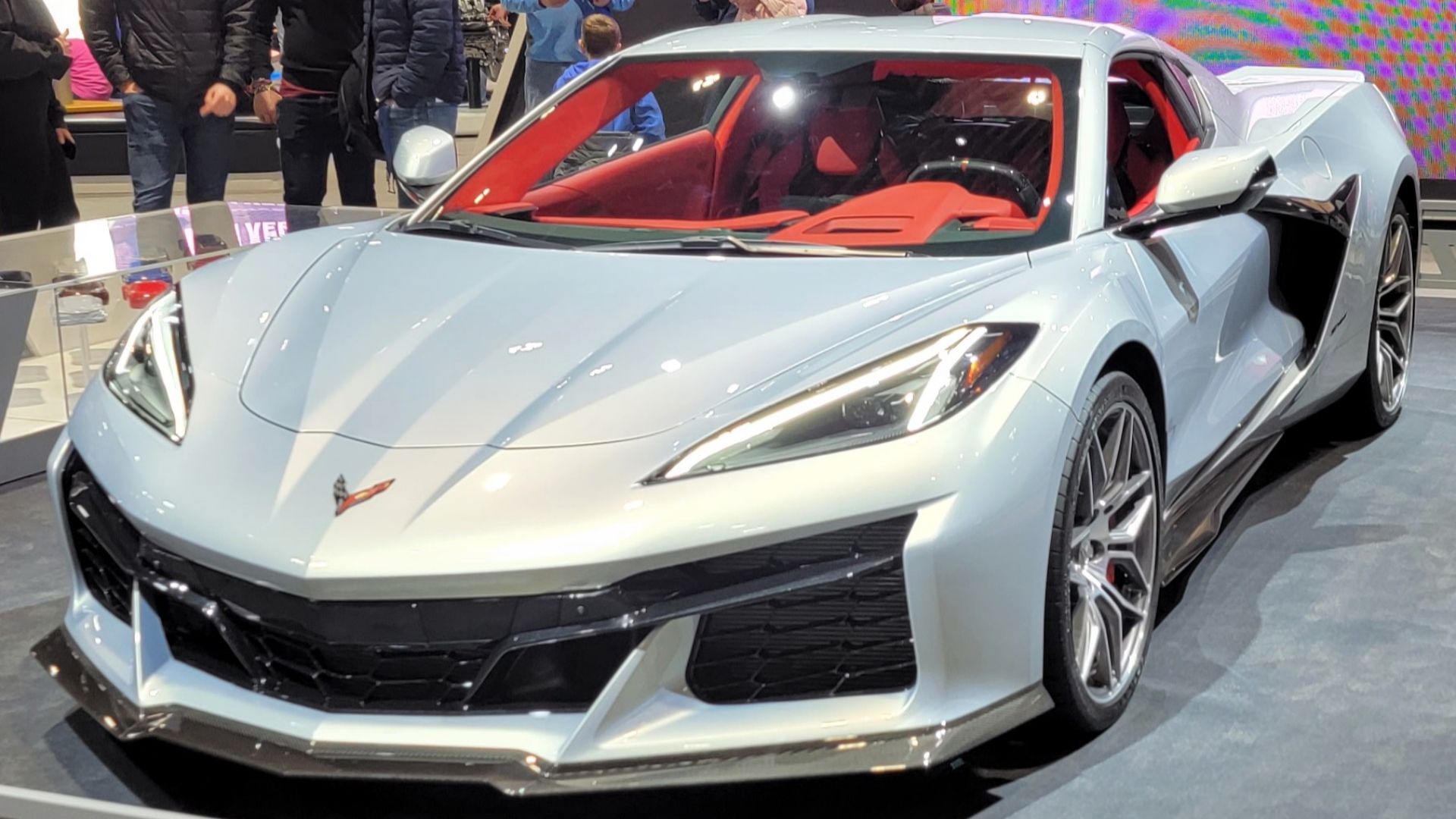 UltraTech66, Wikimedia Commons
UltraTech66, Wikimedia Commons
Dodge Challenger SRT Demon 170
The latest Demon iteration produces 1,025HP from a supercharged V8 and runs the quarter mile in 8.9 seconds. It can hit 60 mph in a record-setting 1.66 seconds under perfect conditions, making it quicker off the line than most jets during taxi and early throttle.
Ford GT Mk IV (2023)
The track-only 2023 Ford GT Mk IV makes over 800HP and reaches 200+ MPH with an extended chassis and carbon body. While never raced against a jet, the GT heritage includes Le Mans wins and test track exploits that make it a serious land missile.
 FIRST DRIVE IN THE ALL-NEW $1.7M 800HP FORD GT MK IV! *4K POV*, Speed Phenom
FIRST DRIVE IN THE ALL-NEW $1.7M 800HP FORD GT MK IV! *4K POV*, Speed Phenom
Zenvo TSR-S
The Zenvo TSR-S is a Danish hypercar that hits 202 MPH with a 0–60 of 2.8 seconds. Known for its active “centripetal wing” that moves with cornering forces, it’s more about control and G-forces than raw top speed. Still, it feels like piloting a jet through tight turns.
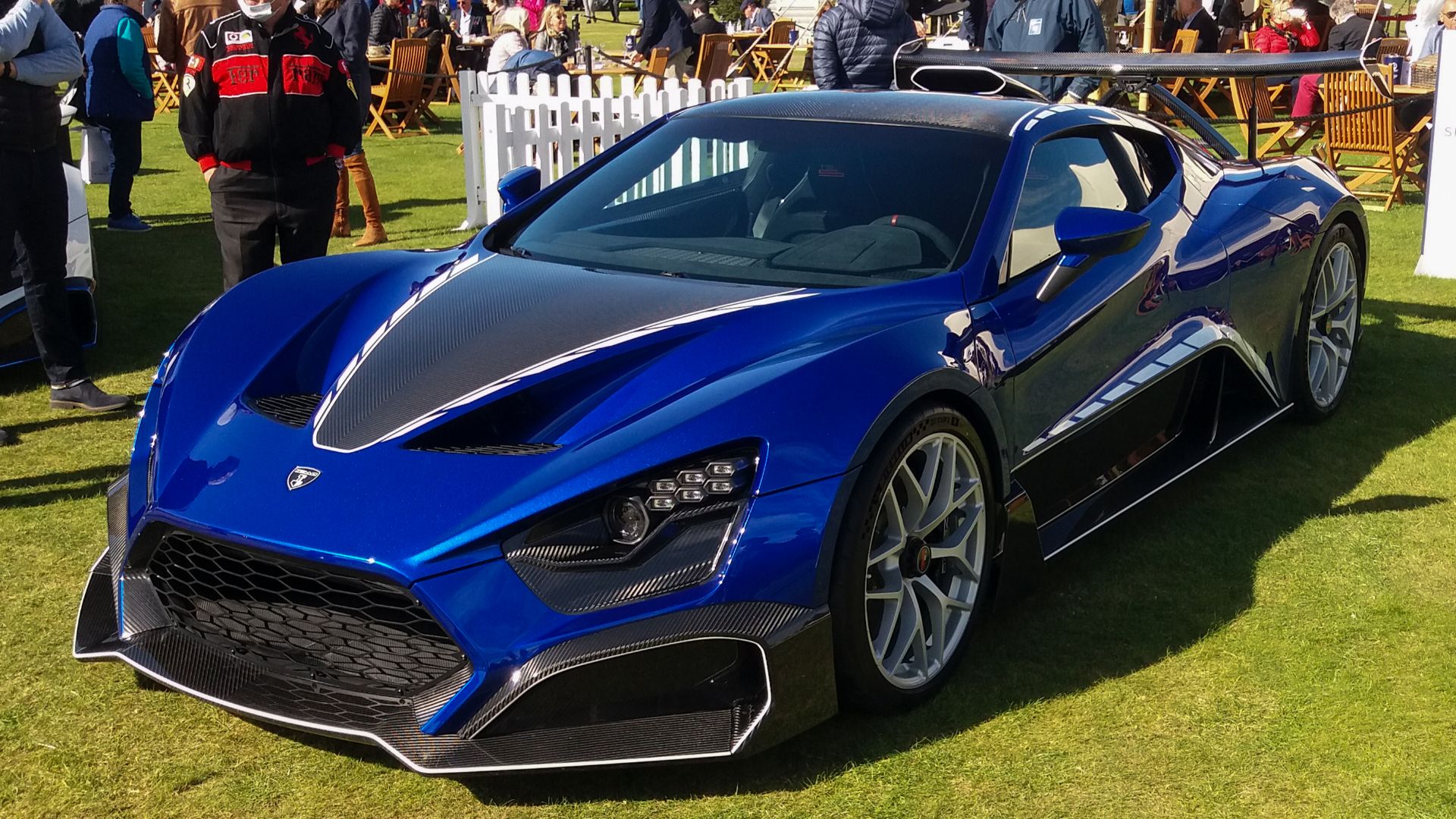 Dylan Johnson, Wikimedia Commons
Dylan Johnson, Wikimedia Commons
Pagani Huayra BC
The Pagani Huayra BC combines hypercar elegance with raw force. Its 6.0-liter twin-turbocharged V12 produces 791HP, sending it to 60 MPH in 2.8 seconds with a top speed near 230 MPH. The aerodynamics, exposed carbon fiber, and active flaps evoke the precision of fighter jets.
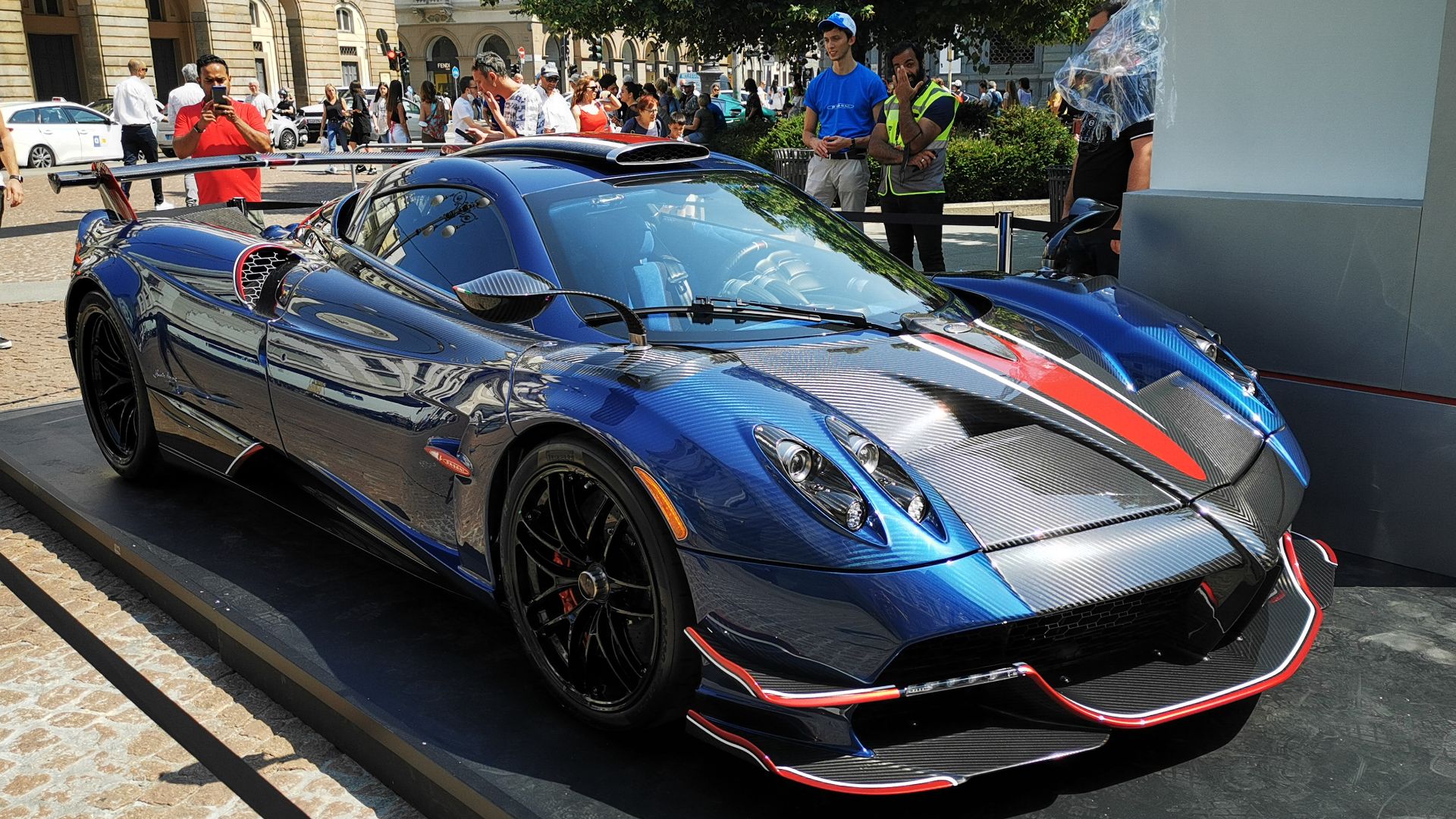 Saggittarius A, Wikimedia Commons
Saggittarius A, Wikimedia Commons
Nissan GT-R NISMO
The GT-R NISMO is often called “Godzilla” for a reason. With 600HP and a 0–60 of 2.5 seconds, it has surprised many supercars in head-to-head races. In a Top Gear feature, it was raced against an RAF Tornado GR4 fighter jet and held its own—until takeoff.
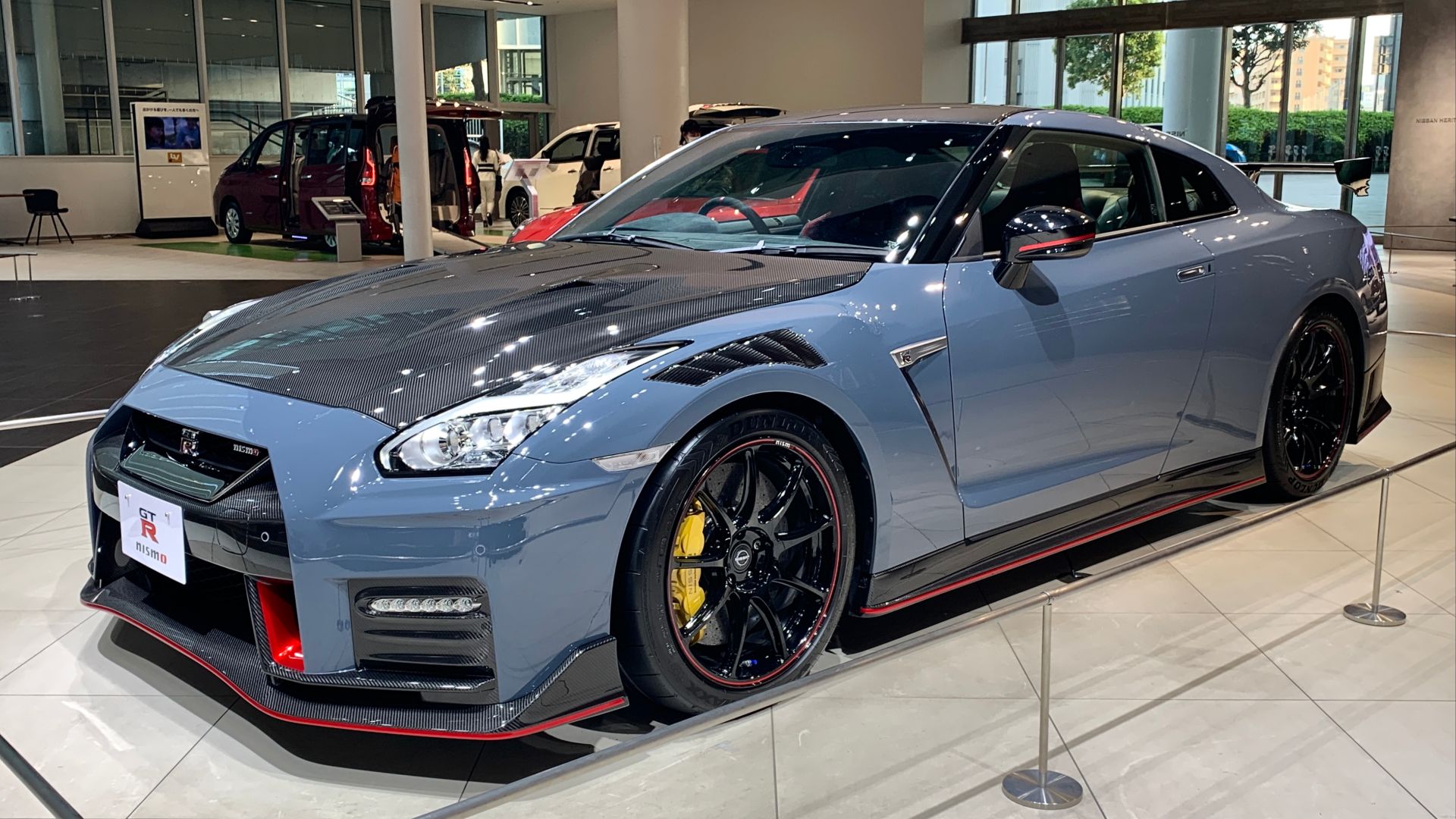 Kazyakuruma, Wikimedia Commons
Kazyakuruma, Wikimedia Commons
Which Hypercar Would You Pit Against A Fighter Jet?
Most supercars can’t match a jet fighter at altitude—but for a few glorious seconds, they can come close. With rocket-like launches and warp-speed top ends, today’s hypercars bring aviation-grade engineering to the road. As electric propulsion and lightweight materials evolve, the boundary between tarmac and sky continues to blur.
 Bugatti Chiron Sport VS Fighter Jet, YOUCAR
Bugatti Chiron Sport VS Fighter Jet, YOUCAR

